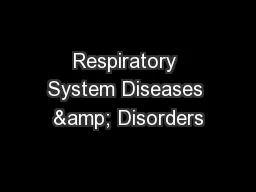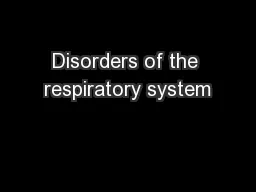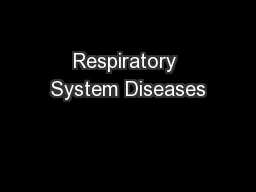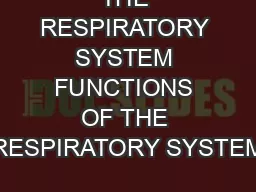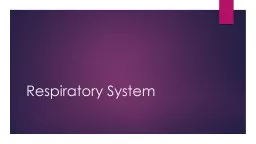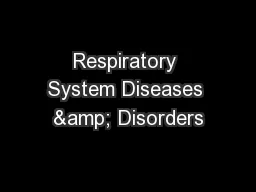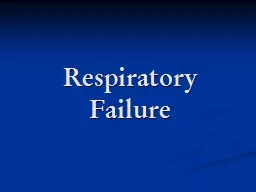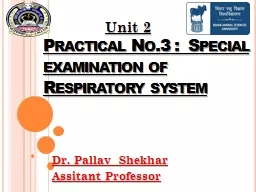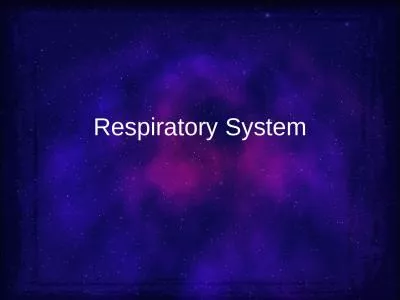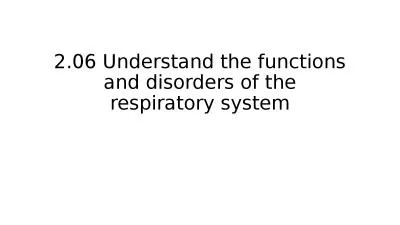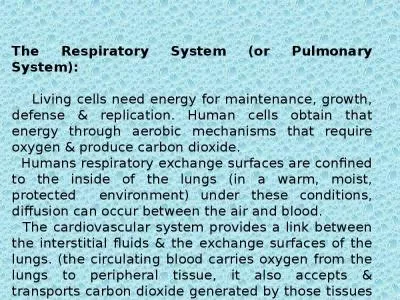PPT-Respiratory System Diseases & Disorders
Author : giovanna-bartolotta | Published Date : 2018-12-09
Berryhill amp Cashion HS1 DHO8 710 pg 206 Fall 20172018 Objectives Discuss the diseases and disorders of the respiratory system and related signs symptoms and treatment
Presentation Embed Code
Download Presentation
Download Presentation The PPT/PDF document "Respiratory System Diseases & Disord..." is the property of its rightful owner. Permission is granted to download and print the materials on this website for personal, non-commercial use only, and to display it on your personal computer provided you do not modify the materials and that you retain all copyright notices contained in the materials. By downloading content from our website, you accept the terms of this agreement.
Respiratory System Diseases & Disorders: Transcript
Berryhill amp Cashion HS1 DHO8 710 pg 206 Fall 20172018 Objectives Discuss the diseases and disorders of the respiratory system and related signs symptoms and treatment methods Identify diseases and disorders that affect the respiratory system including the following . Also its possible for otherwise healthy people to develop severe illness so any one concerned about their illness should consult their doctor There are emergency warning signs that should signal anyone to seek medical care urgently Emergency Warning Respiratory structures such as the airways, alveoli and pleural membranes may all be affected by various disease processes . These respiratory diseases include. :. . Infections. such as pneumonia. . . System. Rodrigo Antón and Daniel Espinoza. Concept:. The . respiratory system. is the biological system of any organism that engages in gas exchange. . This serves for us to breath so we can live and do a lot of things.. HCT II. Asthma. Respiratory disease usually caused by a sensitivity to an allergen. Dust. Pollen. Animals. Food. Asthma Symptoms. Occurs when bronchospasms narrow openings of bronchioles, Mucus production increases, edema develops in the mucosal lining. Lab 7. Lab 7 Activities. Biopac. L08-Respiratory Cycle 1: . Pneumography. . PhysioEx. Respiratory System Mechanics (computer simulations of spirometry) . Respiratory System Structure. Respiratory System Muscles. Transports air into the lungs and facilitates the diffusion of oxygen into the blood stream. Receives carbon dioxide from the blood and exhales it. Organs of the Respiratory system. Slide 13.1. Copyright © 2003 Pearson Education, Inc. publishing as Benjamin Cummings. Get Oxygen into the body. Get waste gases out of the body. Transports gases to and from the circulatory system. Breathing. AKA Respiration. It is . a vital function for living organisms. .. When . we . Berryhill & Cashion. HS1, DHO8, 7.10, . pg. 206. Fall 2017-2018. Objectives. Discuss the diseases and disorders of the respiratory system and related signs, symptoms, and treatment methods. Identify diseases and disorders that affect the respiratory system, including the following: . Defined as the impairment of the lung’s ability to maintain adequate oxygen and carbon dioxide homeostasis.. Respiratory Failure - Definition. PaO. 2. < 60 mm Hg. and/or. PaCO. 2. > 50 mm Hg. Dr. . Pallav. . Shekhar. Assitant. Professor. . Unit 2. . Objectives: To study the method of recording of respiration rate in animals. Procedure:. . Examination of respiration is important in. By . Dr.. . Hesnaa. . Saeed. Al-. Mossawi. Bacterial Diseases. A. Airborne Bacterial Diseases. B. Foodborne & Waterborne Bacterial Diseases. C. . Soil borne . Bacterial . Diseases. E. Sexually Transmitted Bacterial Diseases. Lungs & Air passages. Responsible for taking in oxygen and removing carbon dioxide (CO. 2. ). 4 – 6 minute supply of oxygen. Includes: nose, pharynx, larynx, trachea, bronchi, alveoli, and lungs. 2.06 Understand the functions and disorders of the respiratory system. 2. Functions of the Respiratory System. Provides structures for exchange of oxygen and carbon dioxide via respiration. 2. Production of sound from air passing over vocal cords. Living cells need energy for maintenance, growth, defense & replication. Human cells obtain that energy through aerobic mechanisms that require oxygen & produce carbon dioxide.. Humans respiratory exchange surfaces are confined to the inside of the lungs (in a warm, moist, protected environment) under these conditions, diffusion can occur between the air and blood..
Download Document
Here is the link to download the presentation.
"Respiratory System Diseases & Disorders"The content belongs to its owner. You may download and print it for personal use, without modification, and keep all copyright notices. By downloading, you agree to these terms.
Related Documents

